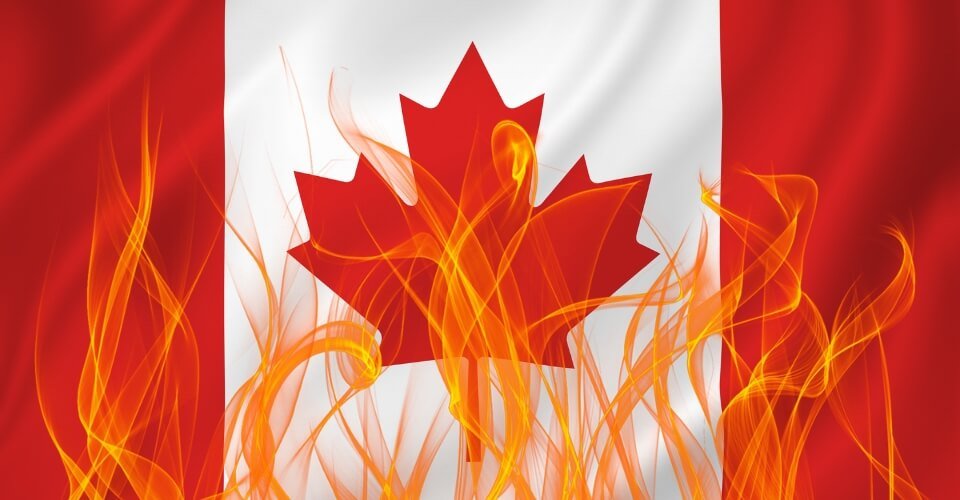Canadian wildfires have always been an annual concern; however, this year’s fires are set to make a new record. The fires have caused such massive smoke that it has invaded the US and generated air pollution alerts.
Wildfire smoke has engulfed entire cities, and even places like New York and Connecticut have been affected. Much of the smoke is arriving from Quebec, where around 160 fires are actively burning.
Canada has issued its strongest warning that the air quality in Ottawa is “very high risk,” while it is classified as unhealthy in the USA. Read on to take proper steps to save yourself from the long-term effects of wildfire smoke.
What Is Causing Canadian Wildfires?
Canada has been on the receiving end of a terrible heatwave. The temperature has been rising unprecedentedly, and experts predict it will continue rising in the next few years. The warm weather pulls the moisture out of soils, increasing the risk factor of fires.
It is believed that most wildfires are caused by human activity and are spread because of the dry weather and wind that carries the flames. After the initial fires started by humans, lightning also contributed to it.
How Are Wildfires in Canada Affecting the USA? Where Is the Smoke in US Cities Coming From?

As Canada experiences one of the most widespread wildfires, its effects are not restricted to the country. The smoke is traveling to the US and affecting the air quality of several cities.
The smoke has hazardous fine particles that are dangerous to breathe. Air quality alerts have been generated for many cities as they experience a record of air pollution. New York City, among some other cities, had the worst air quality in the world. As seen on social media posts, the sky above Manhattan has turned reddish orange.
If you live in these smoke-affected cities, you should limit your outdoor activities to the bare necessities today.
Most of the smoke affecting US cities has arrived from Quebec, Canada. There are above 400 active fires in Canada, and the number only rises as we speak. Two hundred forty of those fires have been listed as being “out of control” by Canadian Interagency Fire Center.
The air quality alerts cover parts of North and South Carolina, Virginia, Maryland, Pennsylvania, New York, Vermont, Connecticut, Rhode Island, Massachusetts, and New Hampshire.
How Long Will the Canadian Wildfires and Smoke Last?
The fires currently have no end in sight. As for the presence of smoke, it depends on wind direction. Michigan, Indiana, and Ohia will slowly see improvement soon, but other areas will experience the smoke for a bit longer.
The wildfires are not going to die down anytime soon. In areas where fuel like dried wood, sticks, and twigs are readily available, it will only spread. Updates on the status of the fire spread are very erratic.
One week it might be manageable due to rain, and the next week, fire hazards could soar due to the presence of dry air, wind, and soil. June projections indicate that the higher-than-average fire activity could skyrocket even more due to the ongoing drought and warm temperatures.
The warm and dry conditions in June will increase the wildfire risk even further in Canada; in fact, it is expected to expand into Yukon by July. However, the eastern edge might recede from Quebec to central Ohio.
How Can Wildfire Smoke Affect Your Health?
The immediate effects of inhaling smoke are shortness of breath, elevated pulse, chest pain, and inflammation in the eyes, nose, and throat. It has been confirmed that the hospital should expect some extra visits due to the smoke.
The long-term effect of the smoke is cancer and even lung diseases. Those who frequently experience forest fires or with breathing issues should be especially wary of the air quality.
The tiny particles in smoke can enter the bloodstream, causing DNA mutations and various health issues. Pregnant women and unborn children are in the high-risk zone.
If you live closer to forest fires, wear an N95 mask, but if you live in faraway cities, avoid going outside as much as possible.
Are you directly affected by the smoke, or do you live a safe distance away? Either way protecting yourself should come first.
Tell us how the wildfire smoke affected your life in the comments below.

